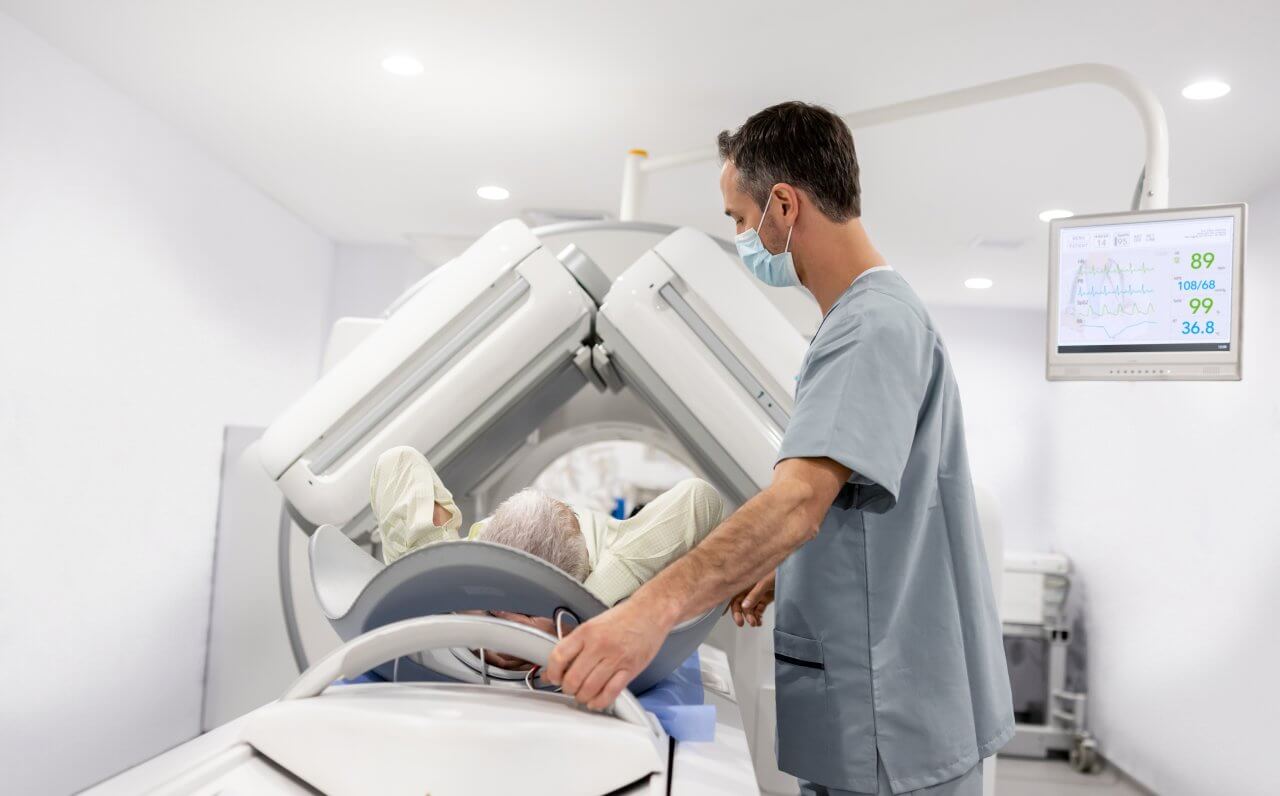How to Help Your Child Through an MRI Procedure

A magnetic resonance imaging (MRI) scan is a procedure that can be used to help doctors diagnose or assess medical conditions in children and adults. It doesn’t involve radiation and an MRI for kids is completely safe. MRIs can even be performed on pregnant women.
A child MRI can provide valuable information on a wide variety of health conditions including congenital abnormalities, sports injuries, cancer, and many more.
Before an MRI Procedure
Patients must remain still throughout an MRI procedure. That can be challenging for kids since they’re inside a tunnel (called the “bore”) and the machine makes loud noises. Consequently, you should explain the MRI to your child in advance.
Younger children are often sedated for an MRI procedure. Consequently, all that’s required of parents for a sedated MRI for a child is to prepare them for the process as directed by your care team.
Children who are eight or older generally aren’t typically sedated. For them, an understanding of child MRIs and what to expect is important. Explaining what the MRI machine looks and sounds like can help minimize their nervousness or anxiety about the procedure. This can include finding recordings of MRI machine sounds that are available online and listening to them with your child.
Keep in mind that some children may not want to hear details about the procedure. If that’s the case, there’s no reason you have to give them lots of information. It may be that all you need to do is emphasize that it’s a completely pain-free process.
Never Miss a Beat
Get the health and wellness news that matters most delivered straight to your inbox. Subscribe to our free email newsletter to stay up-to-date on the latest news and more.
During the MRI
MRIs for kids vary somewhat based on the provider, the child’s condition, and other factors. But some aspects are pretty standard. Learning about them and sharing information on a child MRI and what to expect with your child can help you both be more comfortable with the procedure.
If your child will be given sedation or a contrast dye, they should expect a little pinch at the injection site. They’ll then be taken to the MRI room where the technologist performing the test will explain it. You’ll be asked to stay by the scanner, and MRI rooms can be chilly, so dressing in layers is a good idea. Both you and your child will be given earplugs to help block out the machine’s loud noises
Next, the tech will place your child in the appropriate position on the MRI table. In some cases, your child will be able to see you during the test, but in others, they won’t. A red light will come on to help the tech ensure your child’s properly positioned, then the table will move into the tunnel.
After that, the tech will leave the room and start the test. The machine will progress through multiple sequences, with a brief pause after each. The tech can talk with your child through a speaker during the test. Again, your child must remain still during the procedure. If they move and the captured images are blurry, that part of the procedure will have to be repeated.
Comforting Your Baby During an MRI
For a baby MRI, you can do things like talking or singing to your baby or playing music to help them get through the procedure. Providing them with a blanket and/or pacifier can also be helpful. Gentle touching or massaging may also keep a baby calm in an unusual environment.
Comforting Your Toddler During an MRI
In an MRI for a 2-year-old child, having a favorite toy (or a cool, new one) available is helpful. Reading a story or listening to music are also good ways to calm a toddler. And like with babies, gently touching your toddler’s head or feet can be very reassuring to them.
Comforting Your Preschooler During an MRI
To help an MRI for a 5-year-old go smoothly, you can play music, sing songs, or tell a story. You might also consider holding your preschooler’s hand during the test. And you can give them a sense of control by asking them if they want to watch the procedure.
Comforting Your Child During an MRI
Good tactics for MRIs for kids include doing gentle breathing exercises, having your child close their eyes and picture a favorite place or activity, and having them do a simple counting task to occupy their mind — like counting upward by twos or three or backward from a particular number. You can also give them a ball or toy that they can gently squeeze.
Comforting Your Teenager During an MRI
As with MRIs for kids, the key to helping a teen pass the time during an MRI is getting them thinking about something else. Talking about their friends or hobbies can be helpful. They may also want to listen to music or do gentle breathing exercises.
After the MRI
In an MRI for kids that involves sedation, the anesthetic will wear off within an hour or two after the procedure. If contrast dye is used, it passes through the body within a day. In other child MRIs, what to expect after the procedure is an immediate return to normal activities unless told otherwise by your care team.
After your child’s MRI, a radiologist (i.e., a doctor trained in interpreting medical images) will review the scans. Then they’ll send a report to your doctor, who will contact you to talk about the results. Generally speaking, the results of an MRI can’t be given directly to the family.
Learn More About MRI Imaging at Baptist Health
MRIs are helpful, pain-free diagnostic tests that provide doctors with important information about a patient’s condition. Learn more about MRI services at Baptist Health.
Next Steps and Useful Resources
Find a Provider Near You
MRI vs MRA: What’s the Difference?
How to Prevent Head and Brain Injuries
Concussion Symptoms in Young Children



